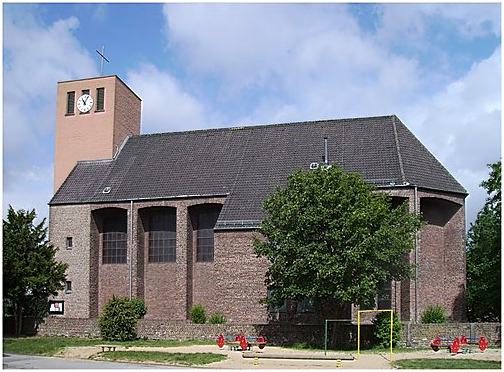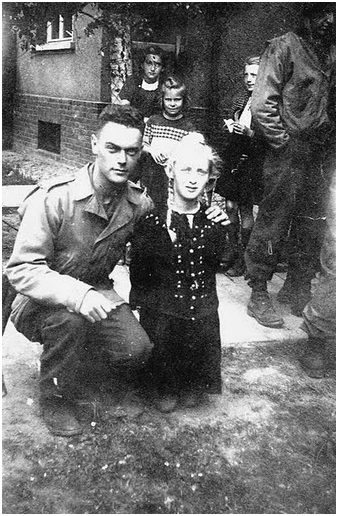| Online: | |
| Visits: | |
| Stories: |

| Story Views | |
| Now: | |
| Last Hour: | |
| Last 24 Hours: | |
| Total: | |
The Battle for Huertgen Forest: Fierce German Counterattack on Lucherberg

Part 4 of a series
Mike Scruggs
Early on December 5, Field Marshall Walter Model ordered General Kochling to launch a final counterattack on the little fortress town of Lucherberg, German artillery was placed just east of the Roer River to minimize any threat from American infantry. Kochling would continue to use the 246th Volksgrenadier Infantry Division and companies of the Ninth Parachute Regiment, plus a dozen Panzer and Tiger tanks. Kochling’s artillery was low on ammunition, however, and his LXXXI Corp was needed to join a counteroffensive into the Ardennes that had been planned by Hitler and Field Marshall von Rundstedt to begin December 16. The objective was to cut off as many Allied troops as possible from their supply lines and capture the strategically important Belgian port of Antwerp.
The German assault on Lucherberg was backed by 180 artillery tubes, 11 Panzer tanks, a 60-ton Tiger tank, and at least two tracked-assault guns followed by infantry from the 404th and 689th Volksgrenadier regiments. The tanks led the attack followed by infantry and were able to penetrate all the way into the town square, while infantry engaged the Americans with small arms fire, grenades, and bazookas in furious house-to-house fighting. Two Panzer tanks worked their way into F-Company positions and destroyed an anti-tank gun and a Sherman tank. They fired directly into the command posts of the first and third platoons killing an artillery forward observer and seriously wounding several men, including F-Company’s commander. However, tanks have a visual disability in the narrow streets of towns. Sergeant George Burns of second platoon was able to work his way down a street and fire his borrowed bazooka directly into the side of a Panzer tank, killing two supporting grenadiers and badly damaging the tank. The Panzer was forced to withdraw. After returning to his platoon for more bazooka rockets, Burns ran into another Panzer. He was so close that he hurriedly fired the bazooka from his hip, killing several German grenadiers. The tank limped away but was destroyed by an American tracked-tank destroyer as it left town. Sergeant Burns was later awarded the Silver Star. All 11 Panzers were incapacitated during the battle, but only two were total losses.
According to Grenadier Emil Weiss of Company 6 of the 404th Regiment, a heavy artillery bombardment was expected to precede the main infantry assault, but the barrage only comprised 600 to 800 rounds. The 404th had taken up positions 200 meters from Lucherberg, but was never able to get closer than 150 meters. Their assault was broken up by an extraordinarily heavy barrage of American artillery, which had formed a semi-circle around Lucherberg. By midafternoon, the Timberwolves of the 415th Regiment had secured the town. I-Company had lost six men killed, 14 wounded, and 22 missing. All their company officers had been killed, wounded, or captured.
General Kochling later wrote that the failure to retake Lucherberg sealed the fate of the German forces west of the Roer. Lt. General “Lightning Joe” Collins, Commander of the First Army’s VII Corp commended the 104th Timberwolf Division “as one of the finest assault divisions we have ever had in the corps,” referring specifically to their work at Lamersdorf-Inden and Lucherberg.
I-Company’s Commander, Lieutenant John Olsen, who died of wounds on December 3, was posthumously awarded the Distinguished Service Cross, the nation’s second highest military award, for his extraordinary courage and leadership on December 2-3. Lieutenants John Shipley and Arthur Ulmer, the forward artillery observers who directed over 2,000 artillery and mortar rounds onto German positions in Lucherberg from a position surrounded by German troops, were awarded the Silver Star for gallantry. German-speaking Sergeant Leon Marokus, who worked with the German medical officer in holding the German paratrooper commander to the terms of the truce, was also awarded the Silver Star for courage and leadership. I have not yet been able to determine the fate of Lieutenant Edwin Verelli, who was retained as a prisoner by Captain Strehler of the 10th Paratrooper company. The Germans suffered tremendous casualties from misdirected German artillery fire later that day.
Highly decorated German Lt. General Friedrich Sixt wrote a report nearly ten years after the war that contained some memories from a rifleman in the 15th company of the 9th Parachute Regiment commanded by First Lieutenant Ludwig Havighorst. During the early action at Lucherberg, the 15th company was ordered to occupy the school at Lucherberg but were driven out by an American air-raid. They left the building just before a bomb collapsed it, but a lieutenant and two riflemen were killed and buried in the rubble. Havighorst’s company suffered 37 dead and wounded in the first 12 hours at Lucherberg.
According to Sixt’s report, it was Lieutenant Havighorst who negotiated the cease fire at Lucherberg with an American officer, so that both sides could recover their wounded.
The report describes Americans and German paratroopers firing at each other from the windows of townhouses built around a courtyard and Havighorst’s awesome leadership by example in close-combat situations. The afternoon following the medical truce, the Ninth Parachute Regiment suffered another 24 dead and 32 wounded from American air strikes and artillery bombardment. Lieutenant Havighorst commented: “It is shocking and tragic—without a fight, without an opportunity to defend themselves, these paratroopers were now buried under the rubble of what minutes earlier had been houses. Havighorst’s company was in Dueren on December 9, when it received orders to join with forces preparing an offensive counterattack through the Ardennes.
The American 104th “Timberwolf” Division was on the west side of the Roer across from Dueren on December 16, when Allied forces were completely surprised by von Rundstedt’s massive counteroffensive against Allied Forces. Five German armored divisions and eight German infantry divisions, comprising over 200,000 highly mechanized troops pushed west just south of Dueren and into Belgium. The Timberwolves were able to hold their position, but a huge inward “bulge” buckled American lines further south. To be continued.
One interesting thing about all the focus on Lucherberg is that the population was only about 500. It did have the advantage of an elevation 500 feet higher the most of the countryside. Also, its buildings were made of of very large and heavy brick The civilians had all been evacuated, as was the German practice, when possible.
Former German officer, pilot, and paratrooper.
1Lt and paratrooper company commander in 1944.
In addition, I have attached a photo of 1Lt Ludwig Havighorst, obviously several years after the war. Havighorst was born in 1914 and enlisted in the Luftwaffe in 1935, age 21. He was selected and trained as a pilot probably in 1941-2. I think he flew the twin engine Junker 88. He was badly injured in an aircraft accident in 1943, and was returned to active duty as a Schirmfalljager or Schirmfallspringer, a paratrooper. He was 30 in December 1944. He actually has a facebook page with almost nothing on it. I doubt he is still alive, he would be 100 years old, but no death date is listed from him that I have found yet. There are two books about him, but they are in German and out of print. *I searched and there are used books available
German girl. Awarded Silver Star
for action at Lucherberg.
http://freenorthcarolina.blogspot.m
Source: http://freenorthcarolina.blogspot.com/2015/01/the-battle-for-huertgen-forest-fierce.html






